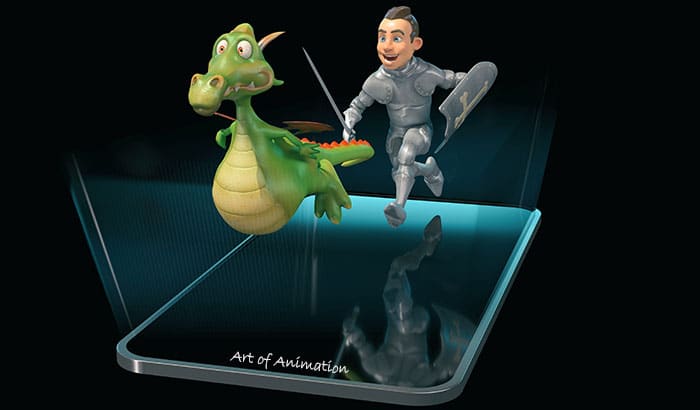The mind perceives the subtle changes of flashing pictures, letting us trick ourselves into seeing movement. But is animation more than an illusion?
Since their earliest days, animated films have captivated us and shown us worlds that are impossible to imagine or create with a camera alone. While film and television operate on the same technological level, few would argue that animation is any less difficult to create. From the frame-by-frame drawings of the early 20th century to the three-dimensional special effects that make up today’s blockbuster movies, the art of animation is unlike any other.
Persistence of Vision: The Illusion of Movement
Have you ever wondered why animation and film were invented and refined at a similar pace? In fact, the difference between their first commercial efforts is roughly ten years apart (1879 for motion pictures and 1988 for animation). Early audiences were dazzled by the medium in a way that is difficult to understand today.
The reason animation and film work at all is due to the way our brains intake and interpret vision from the eye. While studies on the subject of human vision endeavor to discover the real number, the time it takes for light to hit our eyes and for us to receive an interpretation from the brain takes approximately 100 to 75 milliseconds. In common film terms, that’s roughly 30 to 70 “frames per second.”
In reality, animation is simply showing still pictures in rapid order. When we view a work of animation at the speed at which our minds process vision, our brains interpret that we are seeing movement where there is none. Crazy, right?
Two-Dimensional Versus Three-Dimensional Animation
While purists miss the days of pencil-and-paper animation, the technology of modern computers presents modern animators with an important question: where does animation go from here? From the very beginning, animators have utilized traditional techniques of art to imitate life in some form.
A prime example of this form is the 1937 Disney classic Snow White and the Seven Dwarves. Compare this 2D animation to this recent 3D animation by the same company. Do you notice any differences in movement and design? Or any similarities? Are the two movies too difficult to compare? How about this wonderful animated movie that combines both computer and hand-drawn animation. Does this form a bridge between the two art forms?
Is Animation Art?
A very important question raised in the early 1900s and still asked today tries to define what animation really is: is animation art? If you thought the comparison between 2D and 3D animation was hard, try comparing modern animation to oil paintings by Van Gogh or sculptures crafted by Michaelangelo. This may sound impossible without real study! One thing that unites them, however, is the technical skill and mastery of form needed to make something good into something great.
Not every piece of animation is a masterpiece just like not every sculpture captures the essence of the human form. But animation is an art medium that millions enjoy, and it isn’t hard to see why.
Contact REVITY Marketing Agency in American Fork, Utah for Animation Design and Development
Why is animation so useful in marketing campaigns? There exist so few eye-catching marketing techniques these days. When you incorporate something so creative and unique into your advertising and teaching, people will take notice! Contact REVITY Marketing Agency and find out how animation can become an integral part of your marketing plan.







